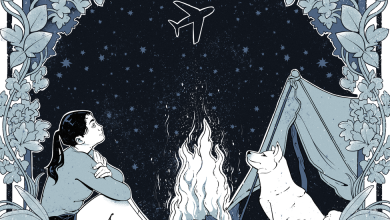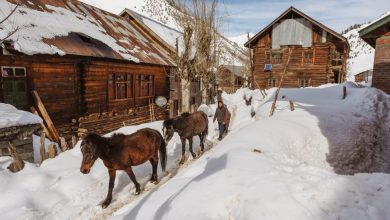Before Buying Lift Tickets, Get Your Skis

Heeding the call for social distance during the pandemic last winter, many Americans embraced snow sports, so much so that the National Ski Areas Association, which represents the largest ski resorts in the country, counted a record 10.5 million participants and estimated that more than 1 million were first-time or lapsed skiers or snowboarders.
Cross-country skiing rose, too, with a 16 percent increase in skier days in 2021 compared to the prepandemic winter of 2019, according to the Cross Country Ski Areas Association.
Some of the larger resorts that rely on international visitors may have slowed down, but local ski areas, where patrons could drive, took off.
“Outdoor winter activities are still a great way to get away from a pandemic and the indoors,” said Nick Sargent, the president of Snowsports Industries America, a nonprofit trade association.
Many of those skiers and riders also purchased or rented equipment, causing sales to surge at retailers, resellers and rental services. Snow sports equipment, which includes things like snowshoes and cross-country skis as well as alpine skis and snowboards, was up 7 percent between August 2020 and March 2021 compared to the same period before the pandemic, according to the retail analysts NPD Group. Alpine equipment outpaced that, growing 8 percent.
“There wasn’t enough inventory in the marketplace to articulate how big the trend to snow sports was,” said Ben Johns, the general merchandising manager for action sports at the outdoor retailer REI.
As of this August, REI’s sales of winter equipment had begun to rise dramatically, with cross country and snowshoeing equipment running ahead of downhill.
Supply chain issues, which have plagued manufacturing, are also threatening snow sports equipment, especially apparel.
In this pinch, how is a snow fan to gear up — literally — for the season ahead? The following are a few strategies that span the spectrum of budgets.
Shop pre-snowfall
The surge to the slopes last year also drove traffic to ski shops, which couldn’t keep up with demand. Though retailers like REI say they are well-stocked now, ski sales are already growing by triple digits each week.
“We will have no problem selling everything, but folks buying early are doing the right thing. Supply will be constrained,” Mr. Johns said.
Just getting goods in stores is a challenge. The Outdoor Industry Association, which represents more than 1,200 manufacturers, distributors, retailers and others in outdoor businesses, said snow gear manufacturing has been affected by aluminum and carbon fiber shortages. But many skis are made in Europe, where factories have not had the pandemic-related slowdowns seen in Asia.
Still, prices are likely to be higher this year.
“All goods are suffering from higher shipping costs and major shipping delays before and after they arrive at ports in North America,” said Kelly Davis, the director of research for the association.
The current season’s sales figures include a spillover by shoppers who were frustrated last winter.
“Another supply chain issue that is unique to the outdoor industry was the massive consumer demand from last year that has carried over to this year,” said Reese Brown, the executive director of the Cross Country Ski Areas Association. “Virtually every pair of skis and boots were sold last year.”
While your ski trip may be months ahead, it’s not too early to purchase equipment. The average cost for a classic women’s cross-country kit of skis, bindings, boots and poles costs about $500 at REI.
“If you are in the market for new product, the sooner the better,” Mr. Sargent said. “If you wait, there’s no guarantee you’re going to find what you’re looking for.”
That goes for used equipment, too. Aaron Provine, the president and chief executive of Geartrade, an online dealer of used sporting goods, said snow gear sales started to pick up two months earlier than usual this year, in August, and that sales are already outpacing last year, which was big.
“It seems people are being more methodical,” he said.
Depending on the condition of the skis, buyers may save between 30 and 80 percent at the site compared to new equipment. The problem with buying used, of course, is finding your size, particularly in boots. It may pay to check the site frequently; Mr. Provine expects more inventory once retail delivery issues are resolved as purchasers of new gear resell the old.
Book rentals in advance
For rental services, particularly those that deliver, last winter was a watershed season.
“A lot of people chose delivery versus a traditional ski shop because they didn’t want to wait in line,” said Mike Cremeno, the chief marketing officer for Ski Butlers, a rental delivery service based in Park City, Utah, that services 50 resorts worldwide. “Just like people were willing to try something new like grocery delivery, a lot gave us a try.”
Renters choose where Ski Butlers’ staffers meet them for fittings, typically at their resort or rental home. The company exclusively rents Rossignol gear, with prices starting at $41 a day with a minimum of two days (except for the weeks of Christmas and New Year’s, when the minimum is three days).
With ski travel expected to rise, rental skis could be the new rental car: the last thing a traveler thinks about, only to be surprised by a shortage.
“Last year was reactive,” Mr. Cremeno said, noting shorter lead times on bookings by skiers making last-minute plans. “This year, we’re getting back to normal, with planning three to six months out.”
Rental operations say they serve both novice and experienced skiers and riders, the former because they lack the equipment and the latter because they are interested in trying out the latest models. Black Tie Ski Rental Delivery, which has been in the business for 20 years, encourages beginners to try the better ski packages, usually about a $10 a day upgrade.
“If you’re learning to drive for the first time, would you be happier with a Porsche or a rusty old pickup truck with brakes that don’t work?” said Ian Prichard, the president and co-founder of the company.
Black Tie has 18 locations — including new outlets in Whitefish, Mont., and Boone, N.C. — serving 45 resorts. The individually owned operations carry equipment customized to local conditions. Prices vary by location, with ski and snowboard packages starting at 47 Canadian dollars a day (about $37) in Banff, Alberta, and $56 in South Lake Tahoe, Calif.
As with getting a restaurant reservation, early birds can pick the time slot they want for a fitting, while those who wait risk being shut out. Renters can swap out different skis during their rental term, including getting wider powder skis in anticipation of a snowstorm.
“The phones light up the night before a powder day because people want to switch it up,” Mr. Pritchard said.
Advance rental reservations often come with a discount, including up to 20 percent at Christy Sports, which has 63 locations in Colorado, Utah, New Mexico and Washington.
Vail Resorts owns Breeze Ski Rentals, which offers online booking for pickup at 16 locations in Colorado, Utah and British Columbia. Advance bookings in the Denver area in December, for example, cost $19 a day for skis, boots and poles compared to $29 for walk-in customers. Epic Pass holders get an additional 20 percent off rates.
Last year, Vail Resorts launched Epic Mountain Rentals, which offers free delivery at many of its resorts.
Schlep and save
Generally speaking, the farther you are from a ski resort, the cheaper the rentals.
Two winters ago, I priced rental gear for a ski trip to Taos, N.M., from a shop affiliated with Christy Sports in Santa Fe and another of its locations at the base of Taos Ski Valley. The difference in rates, about $5 a day, added up over a week of skiing for a family of three. In the end, an early flight departure made it impossible to return the skis in Santa Fe when the shop was open, so we went with the more expensive alternative.
“We try to meet skiers and customers where they’re at,” said Matt Gold, the chief executive of Christy Sports. Compared to outlets in resort bases, he said, “the city stores and mountain town stores will be a little bit less, but then you have to transport the equipment yourself.”
Sometimes, it’s worth it. Last ski season, a trip to Aspen took me through Glenwood Springs, Colo., where it was convenient to rent from a local shop, Brian’s Bench. Paying $24 a day, I saved about half of what I would have spent at the resort’s rental shops.
For those staying local or driving regionally, many REI stores in northern regions rent downhill and cross-country skis as well as snowshoes. Prices for classic cross-country ski packages, with skis, boots and poles, start at $22 for the first night and $13 for each additional night. Downhill packages start at $28 for the first night and $17 for each additional night.
Rent the runway
Supply shortages may be felt the most in winter apparel, much of which is manufactured in Asia, where factories have been slowed by the pandemic and goods have been subject to shipping delays.
If your old parka won’t do, or you hadn’t needed one, try a secondhand source like Geartrade, which has strong inventory of jackets searchable by size. For a more temporary solution, the outdoor industry has its own version of Rent the Runway in services that supply outerwear.
Kit Lender, which ships rental winter apparel to your destination, providing pre-addressed packaging for returns, offers a men’s set that includes a jacket and snow pants from Patagonia, Kombi gloves and Smith goggles for $49 a day, with a three-day minimum, and a women’s kit from Helly Hansen at $45 a day.
For the youngest family members who are likely to outgrow their winter gear from year to year, Kit Lender has toddler sets from $16 a day, as well as clothing for older children from $20. The service also has sport-specific apparel for snowboarding, snowmobiling and snowshoeing.
Slope Threads, a shop based in Golden, Colo., also ships its rental apparel to your destination (free with orders made more than five business days in advance). Fashion meets function in the inventory, with lots of color combinations. Prices for adult sets start around $45 a day.
Elaine Glusac is the Frugal Traveler columnist. Follow her on Instagram @eglusac.
Follow New York Times Travel on Instagram, Twitter and Facebook. And sign up for our weekly Travel Dispatch newsletter to receive expert tips on traveling smarter and inspiration for your next vacation.





